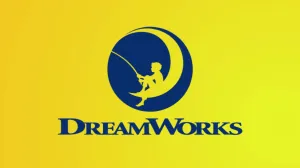Filmmakers and storytellers have developed an entire cottage industry about exploiting our fears of technology gone awry. Black Mirror‘s got five seasons and an interactive movie out of it, not to mention the various films of haunted VHS tapes, cell phones, and the like. By that measure, Come Play‘s attempt at scaring the world straight from being tethered to our phones feels more storybook than parable, and perhaps a little laughable by its conclusion. It’s not entirely a lost cause, though, as it maintains a well-constructed structure and has decent enough spooky moments.
Videos by ComicBook.com
Written and directed by Jacob Chase, Come Play tells the story of a young Autistic boy Oliver who (Azhy Robertson, Marriage Story) communicates exclusively through an app on his phone which also serves as his primary refuge from the real world. One night he finds a mysterious book has arrived on his phone telling of a Slender Man-like creature named “Larry,” who lives outside our world and seemingly peeks in through phones and similar devices. In a different world, this was taken the E.T. route and Larry is cute in an ugly kind of way and befriends Oliver with kindness, and not by breaking all the light bulbs in the house and startling everyone.
It’s worth noting that Robertson does a truly incredible job for being such a young actor in the part, and for having literally no dialogue throughout. He carries the role by reactions and expressions which seems like a big task for him. In fact, all of the young actors that appear in the movie do great work with their material, which seems to speak more to the target audience of the entire piece than anything.
Community actress Gillian Jacobs takes a dramatic turn as Oliver’s mother Sarah, but whose work is undercut by her husband/Oliver’s father, played by John Gallagher Jr., who has the hilarious occupation of working in a parking lot that exists in the middle of nowhere like a Courage the Cowardly Dog joke. Though Jacobs mostly blazes a new trail for herself here, this is where the influences on Come Play become clear. It’s quite obvious from the set up of the story and its narrative beats that it was inspired by Jennifer Kent’s 2014 film The Babadook, as the film plays out almost exactly the same as that movie throughout.
Mysterious book about a peculiar monster with a rhyme scheme? Check. Tired mother dealing with difficult family situation? Check. Troubled young boy with unfortunate haircut? Check. To elaborate on the similarities further would border on spoiler territory, but frankly, it’s all there.
Even with this clear influence, there’s a lot of moments in Come Play that really do work. All of the scares are set up before the eventual payoff, and even if they go exactly the way you’re expecting, they manage to stick the landing for the most part. There is very little that Come Play does that hardened horror fans haven’t seen before a hundred times, however, and it was even beaten to the punch with some of its fresh gags by the quarantine-themed haunted house movie Host. That’s where the line has to be drawn; Come Play isn’t reinventing the wheel but it’s got a fresh enough spin on this kind of tale that newcomers can find something to like.
Come Play didn’t do much of anything for me, but if you’ve got a pre-teen that wants to get into horror movies (and you want to make sure there’s no fountain of blood), you could do worse than Come Play. This one is perfect for an audience that hasn’t seen it all and will come across as mostly boring for those that have.
Rating: 2 out of 5
Come Play will be released in theaters on Friday, October 30th.








